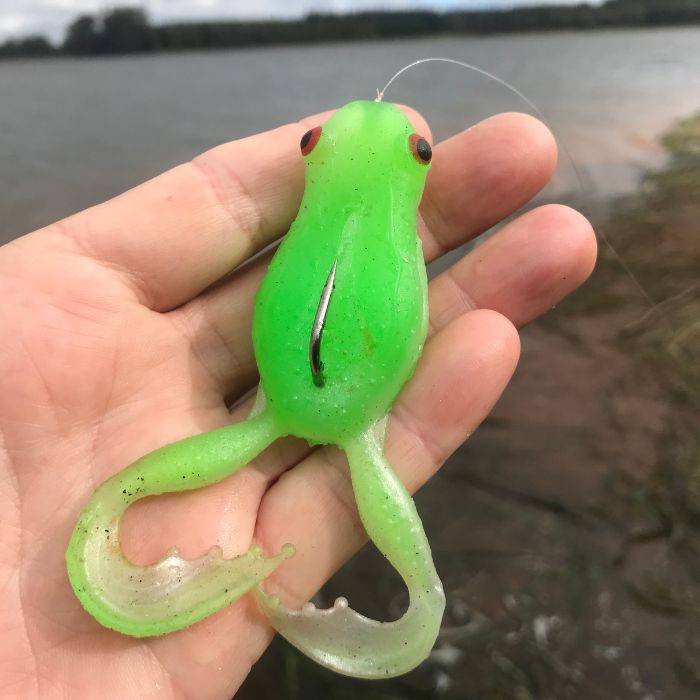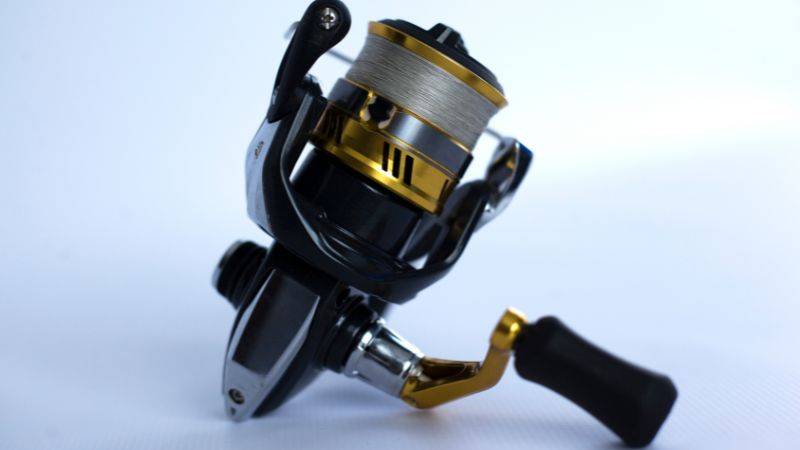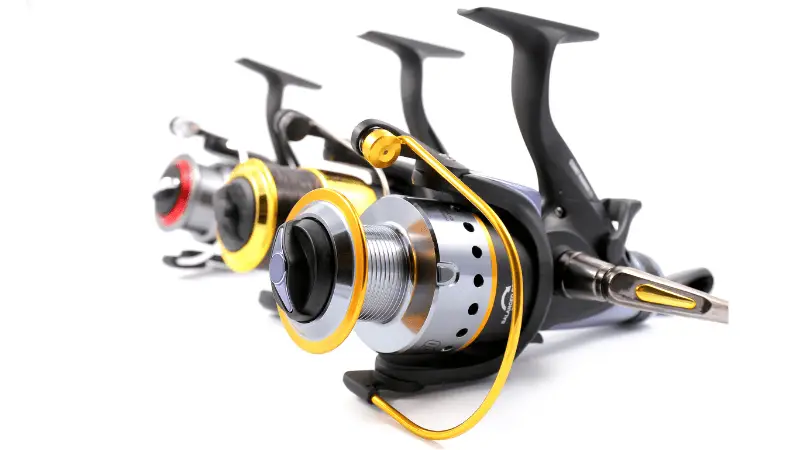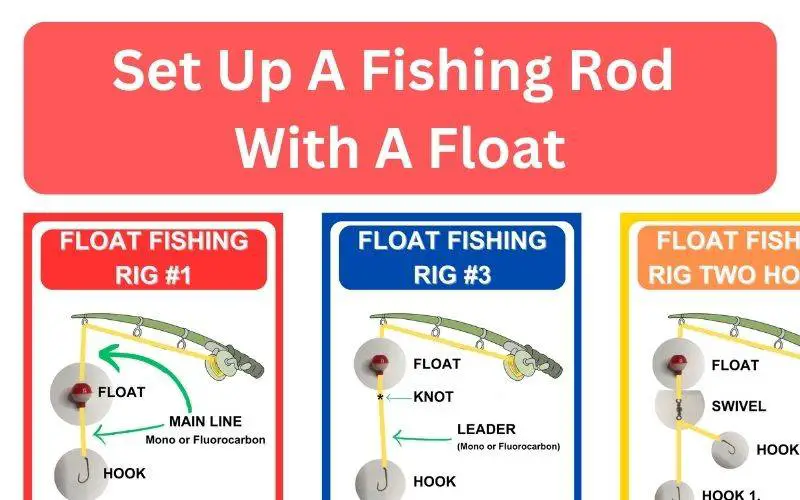
Fishing with a float is an effective technique that can be used to catch a variety of fish species. However, setting up a rod with a float can be a bit tricky for beginners, as there are many ways to set it up. So, in this article, we will show you how to set up a fishing rod with a float.
This article is ideal for beginners and also gives the intermediate angler some options as well.
We will include images and illustrations on several ways you can rig up a fishing float.
Why use a fishing float? A float can be used as a visual strike indicator and is also ideal for keeping the bait high in the water column and avoiding snags.
You might also be interested in – How To Avoid Getting Snagged While Fishing
Float Fishing Tips For Beginners
How To Rig A Fishing Float And Techniques
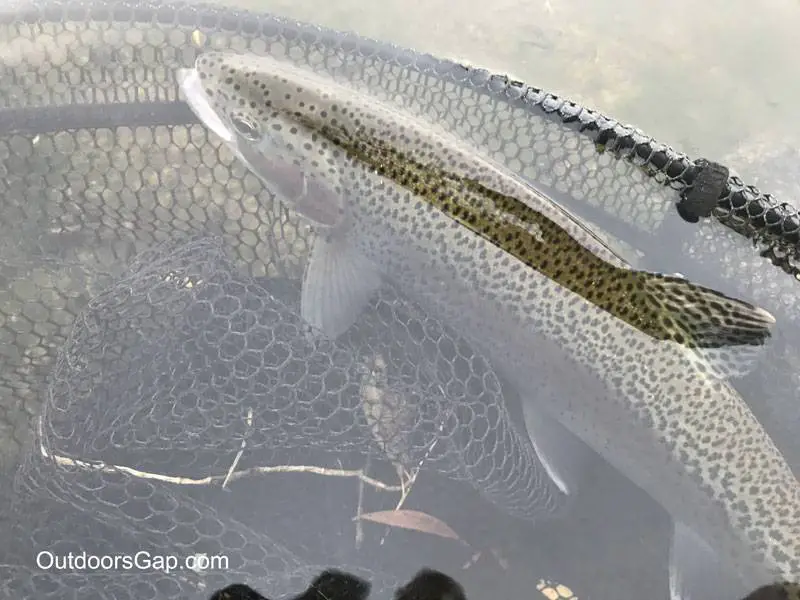
Here are some ways you can set up the float with various types of fishing line, methods and leaders.
We will cover the positives and negatives of each system in more detail below.
- Main Line With Just Float
- Main Line, Swivel, Leader And Float
- Main Line With Leader And Float
- Running Float
- Float with Sinker
- Small Strike Indicator
Please note: there are plenty of other ways to rig a float, but this gives you several main options.
Adjust the depth of the bait you want, by moving the float up or down the fishing line.
Here are the set-ups in more detail.
-
Main Line With Just Float
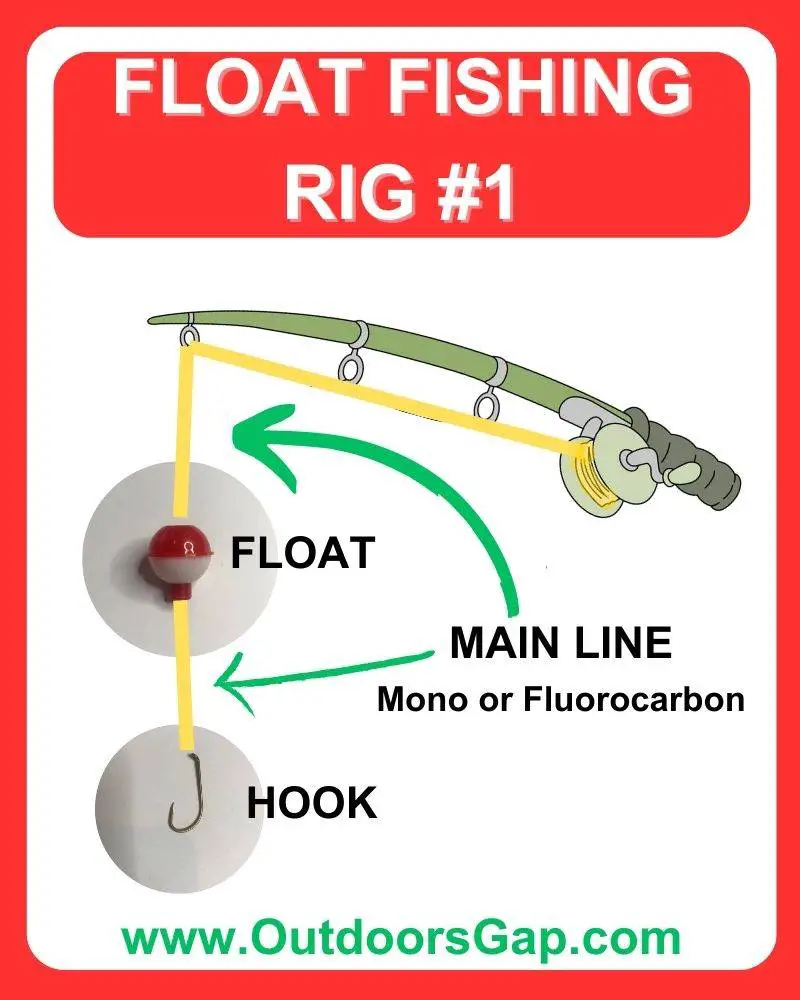
With this rig you can use mono (monofilament) fishing line, or fluorocarbon as the main line. You don’t use a leader as such, as you just attach the float and hook to the main fishing line.
The advantage of this rig is that it is quick to set up.
The disadvantage is that you might need a lighter or heavier poundage leader line than the main line you are using for the conditions or fish you are targeting. As an example, if you are fishing for toothy fish that can abrade or cut a thinner line you are limited with the diameter and poundage of your main line.
It is not recommended you use straight braid with this set up, as fish can spot braid easier than mono of fluorocarbon.
-
Main Line, Swivel, Leader And Float
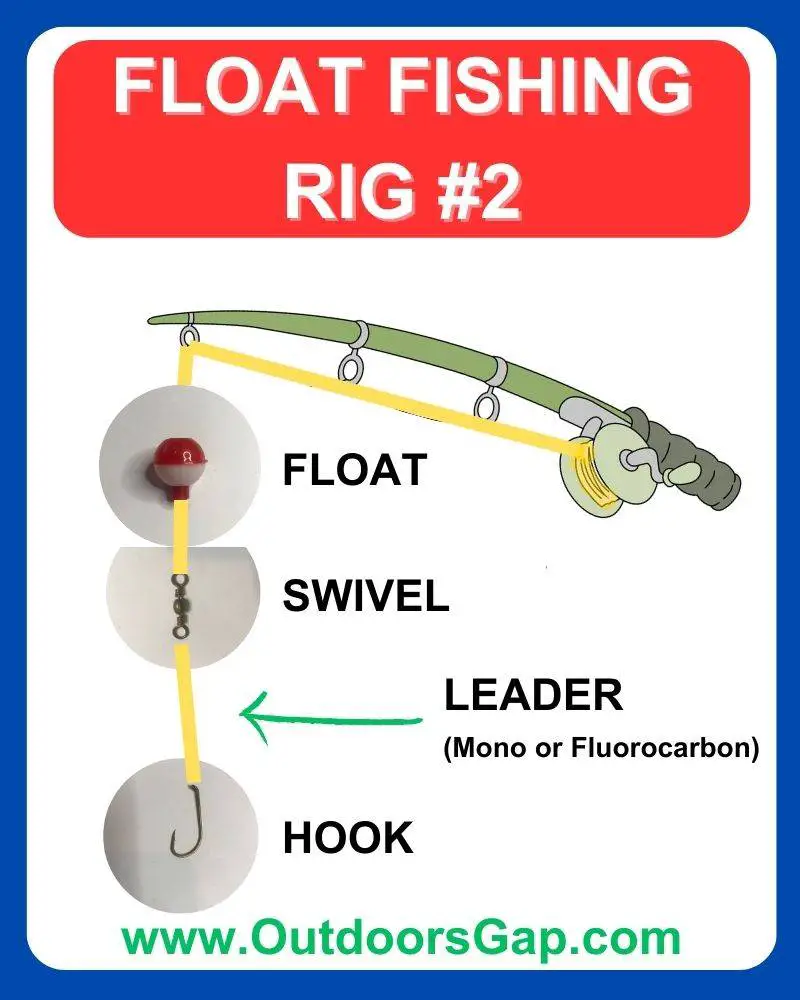
This is a common way to set up and fish a float with a leader and swivel. You can place the float just above or below the swivel.
You can use braid, mono or fluorocarbon for the main line. (Braid is good, as it floats. But it can get tangled easier.)
In this rig you have a leader that attaches to a swivel. The swivel also attaches to the main line. The swivel helps prevent twisting from fighting a fish. You can also use the swivel as a stopper, depending on the float design.
The disadvantage is it takes slightly longer to set up.
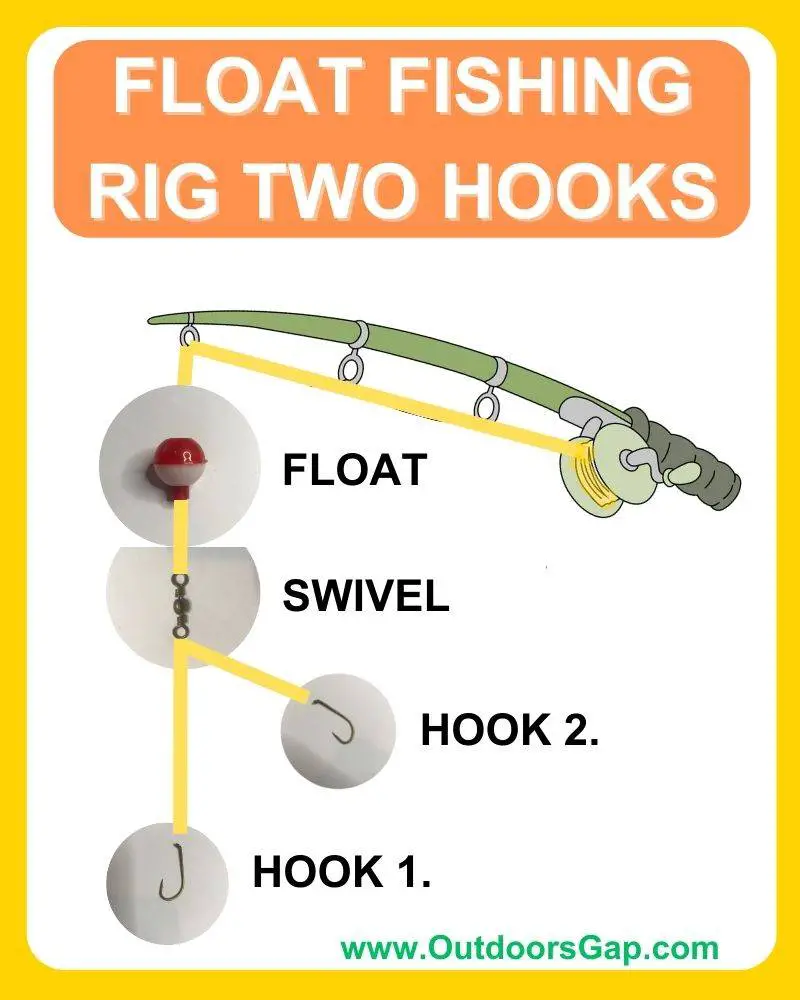
You can also attach two or more droppers or baits from this rig like as above illustration. Tip use the tag end of the leader for the dropper. Or use a 3-way swivel and attach the second line / dropper to that.
-
Main Line With Leader And Float
The main line is tied directly to the leader. (A swivel isn’t used.)
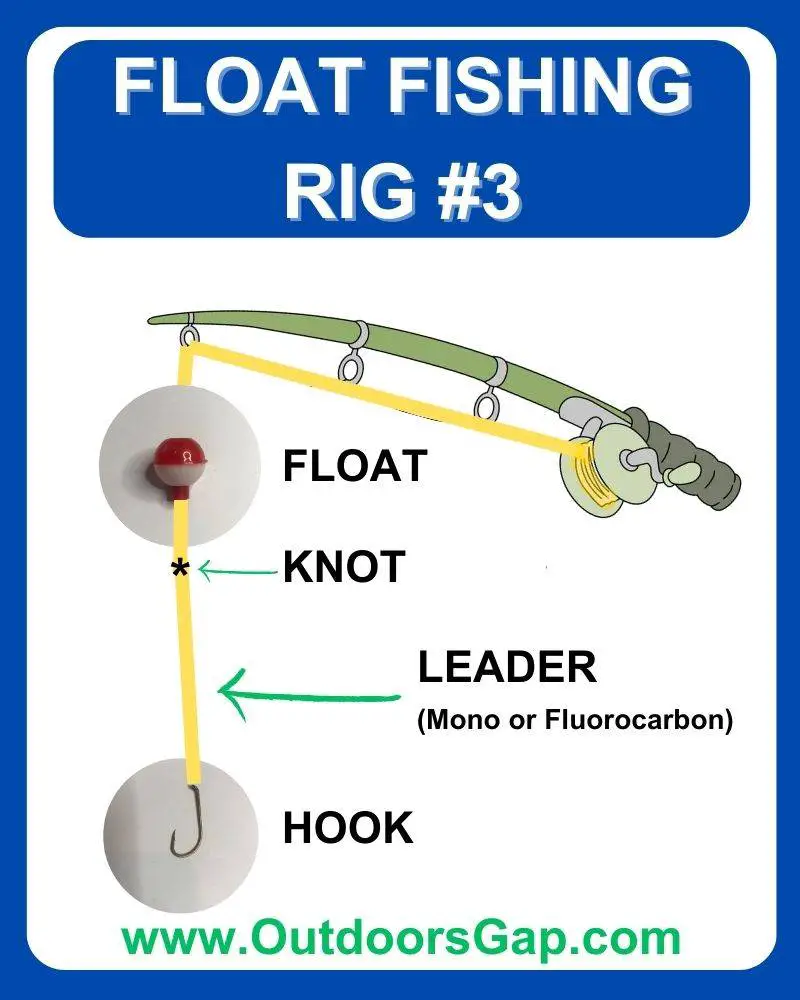
The advantage of this set up is you can change the diameter / poundage of the leader to suit the fishing conditions and fish targeted. Example, a stronger leader is used for a bigger fish.
Use mono or fluorocarbon for the leader. Use a surgeons knot or blood knot to tie the lines together.
If you use braid for the main line, use a double Uni knot to tie to the leader. As braid will slip tied to mono or fluorocarbon line.
One disadvantage is a hard fighting fish can twist the line without a swivel.
You might use this set up for small baits, or micro soft plastic lures like the Z-Man Micro Finesse LarvaZ or Trout Magnet.
For more information visit on several ways to set up a Trout Magnet, visit – How To Set Up A Trout Magnet
-
Running Float
With a running float rig, the float can slide up and down the line. This method is less common, but an option.
The advantage is that ideally the fish shouldn’t feel the weight of the float as it takes the hook. (Just like the idea of a running sinker.) But with the weight of the float you can still cast it.
You can use a swivel or tie the leader directly on to the main line. A
Depending on how freely the float can move up and down the fishing line, the negative is that the bait / hook can sink too much and you may not know the depth of the bait. This depends on wind conditions, weight of the bait and friction of the set-up.
-
Float With Sinker
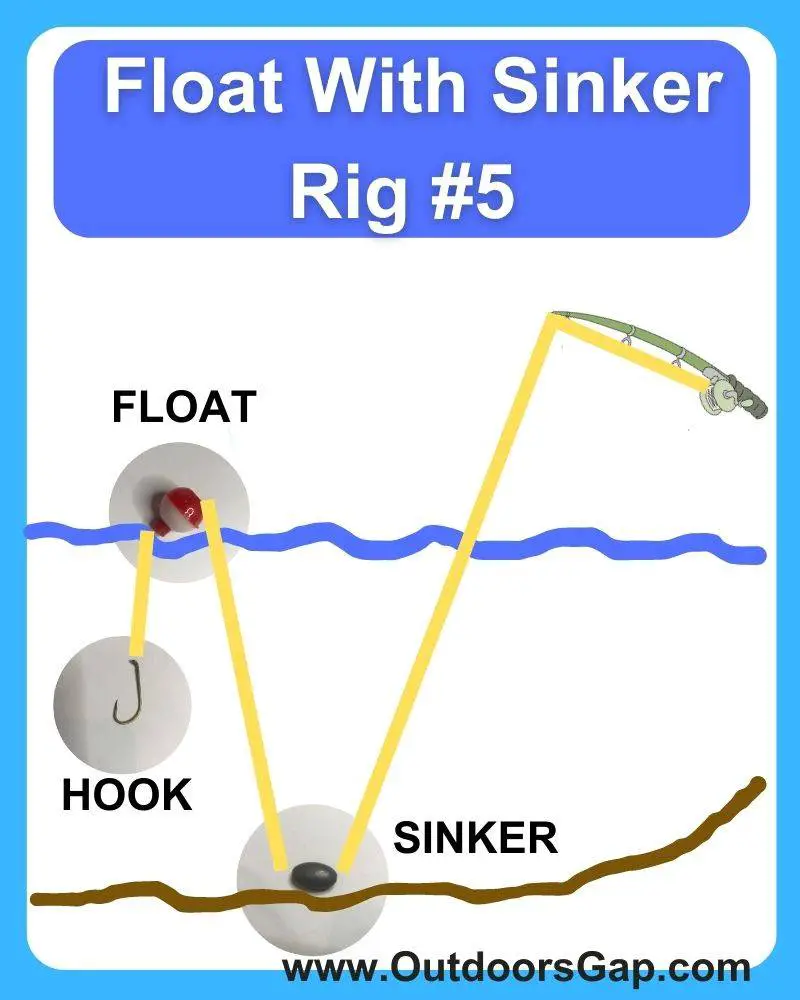
An unusual fishing technique but this has the advantage in that you can fish into the wind and the bait will stay around the area and not drift in. The weight of the sinker can also help cast the rig out.
Use a running sinker for this set up.
The disadvantages is that you can get more tangles and takes longer to set up and adjust to the correct depth.
-
Small Strike Indicator
This rig is a bit different and just uses a small bit of foam, or cork as a small strike indicator. Cut a slit in the foam or cork and wedge the line in.
This is ideal for fishing small streams and small baits, or micro lures when a large bubble type float wouldn’t be ideal.
You can also use this technique for fly fishing with a small strike indicator as well. (A big indicator is too bulky, and it won’t cast properly.) You can buy these strike indicators at fly fishing shops, or at Bass Pro and Cabela’s as well.
Float Fishing Tips
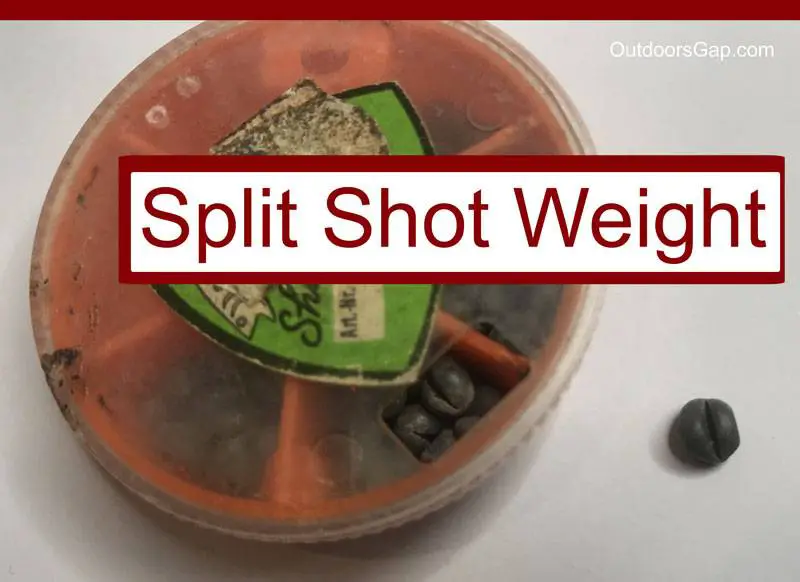
Optional: With all these set ups above, you can attach split shot to help the bait sink if required. Place it 3 to 7 inches on the line above the hook.
The length of the leader (and float depth position) will depend on the depth you are fishing, but try around 3 feet (1 meter) for a start.
It is recommended that you grease the main fishing line with Mucilin Silicone Line Dressing, or use Vaseline. This helps prevents the fishing line from sinking and pulling the float back towards the angler.
(You don’t have to grease braid fishing line.)
Paint the float if it is hard to see on the water.
Have a few sizes of fishing floats in your tackle box for different conditions and baits.
Types Of Fishing Floats
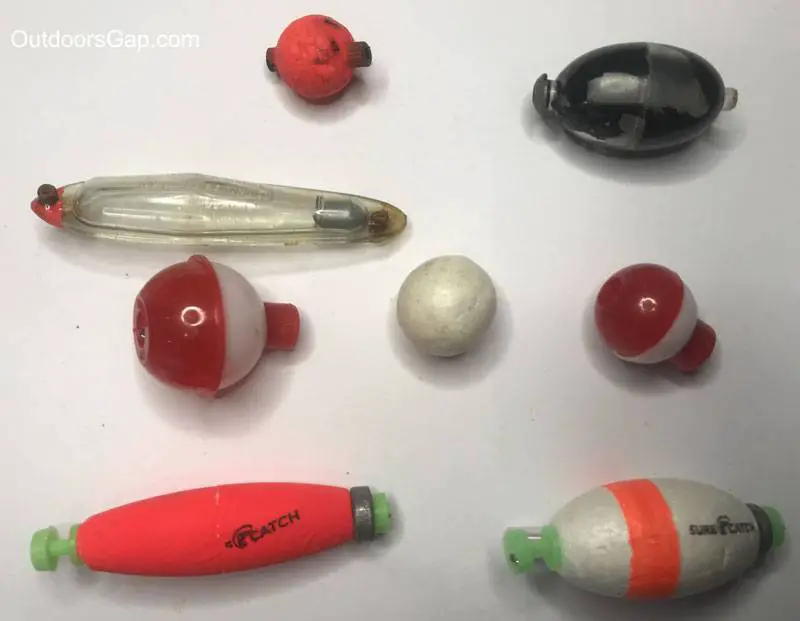
It is important to choose the right float for the type of fishing you will be doing. There are various types of floats available, such as fixed, sliding, and slip floats, bubble floats, pencil floats, quill floats, etc. Each with its own advantages and disadvantages.
Here are some factors to consider when choosing a float:
- Size
- Shape
- Material
- Visibility
Basically a large float would be for heavy baits and rough conditions, while a smaller float is for smaller baits and calmer conditions.
As an example, if you use a large float to fish in pristine shallow trout waters, a large float can spook the fish. As well if a fish did take the bait, the float would be hard to pull under and you may not know you had a take.
A small float will sink with a heavy bait and heavy line.
A larger float will be more visible and easier to see when a fish takes the bait, while a smaller float will be less visible but more sensitive to bites.
What Are The Negatives Of A Fishing Float?
For land based angling, you need the wind behind you. Otherwise the float will keep being blown onto shore. In a boat this isn’t an issue as you can position the boat and fish with the wind.
A disadvantage of a floating rig is it is hard to cast with too long a leader.
For fish that are feeding close to the bottom, or in deep water, a float rig won’t get the bait close to the fish and hence less bites.
Lighter floats are hard to cast a long way.
Selecting the Right Equipment
Before setting up a fishing rod with a float, it is important to select the right equipment. This includes choosing the right rod, float, and line. Here are some tips to help you make the right choices:
Selecting the Right Fishing Line
The line is the link between the rod and the bait, and it is key to choose the right line for the job. When selecting a line, consider the size of the fish you are targeting, the weight of the float and bait you will be using.
A lighter poundage line will allow for more sensitivity and better presentation of the bait. While a heavier line will be more durable and better for larger fish and snags.
Here are some factors to consider when choosing a line:
- Strength
- Diameter
- Visibility
- Stretch
- Type – Monofilament, Braid and Fluorocarbon
For beginner anglers we recommend monofilament for use as the main line and leader. As it is cheaper than fluorocarbon and less fiddly then braid fishing line.
Adding The Hook
After setting up the float, the next step in setting up a fishing rod with a float is to add a hook and bait.
The size of the hook should be appropriate for the size of the bait being used. A hook that is too small may not hold the bait securely, while a hook that is too large may make it difficult for the fish to take the bait.
There are different types of hooks available, including J-hooks, circle hooks, and treble hooks. J-hooks are the most common type of hook used for float fishing. Circle hooks are designed to hook the fish in the corner of the mouth, which reduces the chance of the fish swallowing the hook.
Adding Bait To The Hook
Adding bait to the hook is the final step in setting up a fishing rod with a float. The type of bait used will depend on the type of fish being targeted. Common types of bait include worms, minnows / baitfish, crawfish and insects like crickets, grasshoppers and meal worms.
Artificial baits like Powerbait are great to work with a float for trout and panfish. Tip, if the Powerbait floats, add some split shot a few inches above the hook.
To add bait to the hook, start by threading the bait onto the hook. Make sure the bait is secure and covers the hook. This will help attract fish and increase the chances of a successful catch. (I like the point of the hook being exposed, just in case the bait covers the point and it interferes with the hook-up.)
It’s important to note that some types of bait may be illegal to use in certain areas or during certain times of the year. Always check local regulations and guidelines before selecting bait for fishing.
Also some states and waters may encourage catch and release. For fishing places in Texas, check out – Where Is The Best Fishing In Texas? Top Spots To Cast Your Line
Conclusion
Make sure the float is set at the correct depth for the type of fish you are targeting.
Adjust the depth of the float accordingly of the float by sliding it up or down the line.
Use the appropriate size float for the type of fishing you will be doing.
With the right technique and some practice, anyone can set up a fishing rod with a float and enjoy a successful day of fishing.

